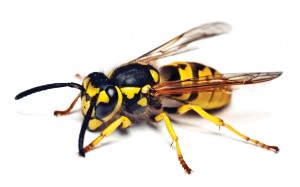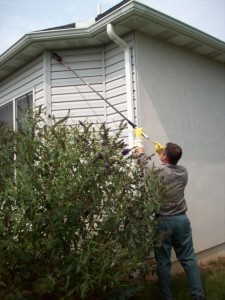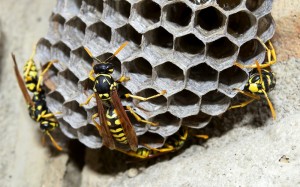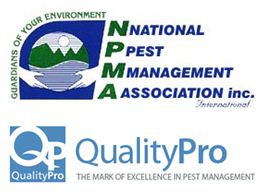As a pest control company (or exterminators in old terminology) we get daily calls late Summer through Fall from concerned property owners who have yellow jackets entering their homes or businesses.It’s commonplace to hear the frustration as they witness yellow jackets (a kind of wasp) taking up occupancy in the exterior walls as they enter through a crack or hole. While to us treating these nests is usually a matter of routine, it can be very difficult for the layperson for a number of reasons.
It’s common for us to hear, “Well I sprayed them a couple days ago and it didn’t work because they’re right back at it again.” The key to eliminating a yellow jacket nest in a structure is to get control materials all the way into the nest.

Wasp Control Materials & Methods
There are many reasons people struggle to kill yellow jackets. It could be that you’re using the wrong kind of stinging insect control.
Spraying the entry point with a liquid wasp spray or other aerosol will kill a lot of yellow jackets, but you will not get material into the nest itself. Nests treated with aerosols will almost always bounce back.
The preferred material for bee and wasp control in a wall void is an insecticidal dust. These can be difficult to find at your local hardware store. This material is applied with a duster. This piece of equipment propels the dust into the nest.
As the pest management professional squeezes the duster, the air pushes the dust into voids. Because the dust is so light it can float over and around objects within the wall that a liquid material cannot. In situations where the nest is difficult to reach, we attach an extension pole onto the duster as needed.
Killing the Whole Wasp Colony
Stinging insects like yellow jackets often live in tight quarters. Their nests are similar to other nest you may have seen but they prefer to build them in walls or the ground. They bump up against one another and travel throughout their nest spreading the dust to other workers, larvae, and the queen.
As the workers out foraging for food return to their nest, they come in contact with these materials as well. That is why a proper treatment can kill a colony of yellow jackets in a matter of 24-48 hours.
Safe Wasp Control
If you attempt to try to kill bees or wasps, please use proper personal protective equipment. Approaching a yellow jacket nest is dangerous business. They are aggressive defenders of the nest, and you can find yourself with several stings in very short order.
You should be wearing a bee suit to protect yourself from the thousands of angry yellow jackets that will attempt to defend their colony.
Do Not Plug Holes Before Treating Wasps
Many people will attempt to kill a nest simply by plugging the entry hole from the outside. This almost always results in a home or business full of bees. Yellow jackets never just lie down and die. If their primary entry point is blocked, they will always look for another way out. This alternate escape route is often indoors.
Using a Pest Control Company for Wasp Control
For what it’s worth, you are best off leaving yellow jacket treatment to professionals. It can actually be cheaper to use our pest control services to take care of the nest for you than it is to purchase all of the equipment and materials that is required to successfully eliminate a yellow jacket nest in a structure.
There are 1-time treatment options for stinging insects available. These services offer a warranty for a limited amount of time for the specific nest that we treat. However, if you have other pest control concerns, we do treat stinging insects as just one of the many pests covered in our Quarterly Pest Control program.
Many of our clients choose that option to address other pests and also for the year-round protection it provides. If you have any questions about our pest control service options, please don’t hesitate to contact us.




